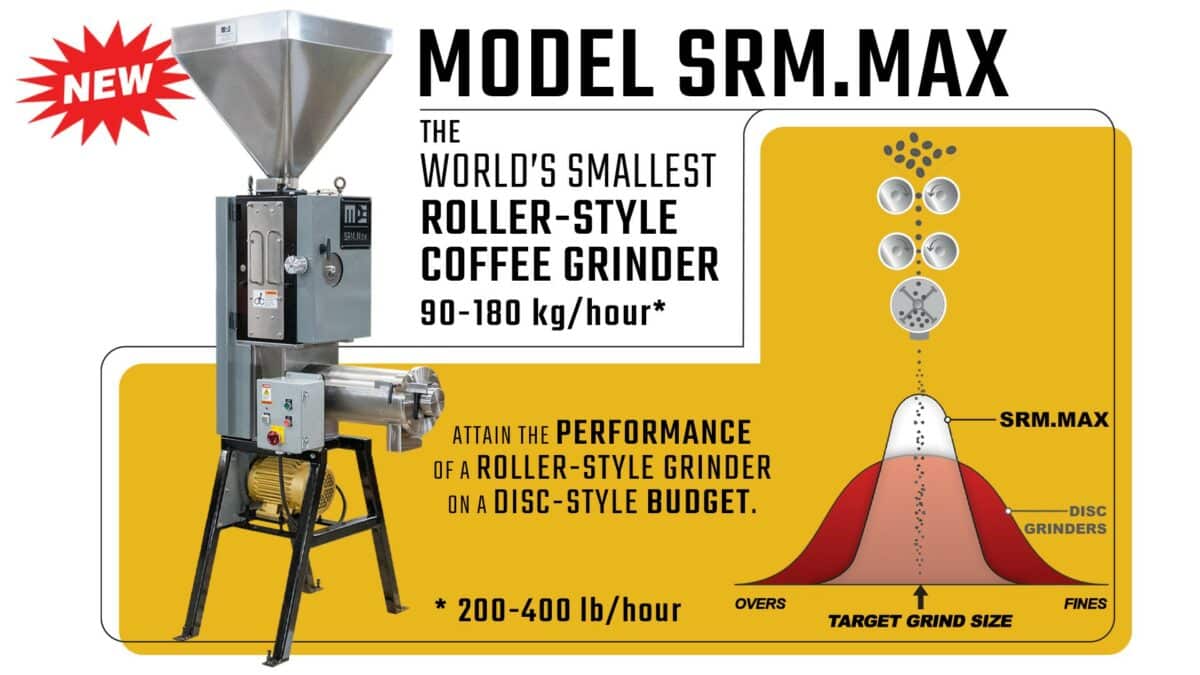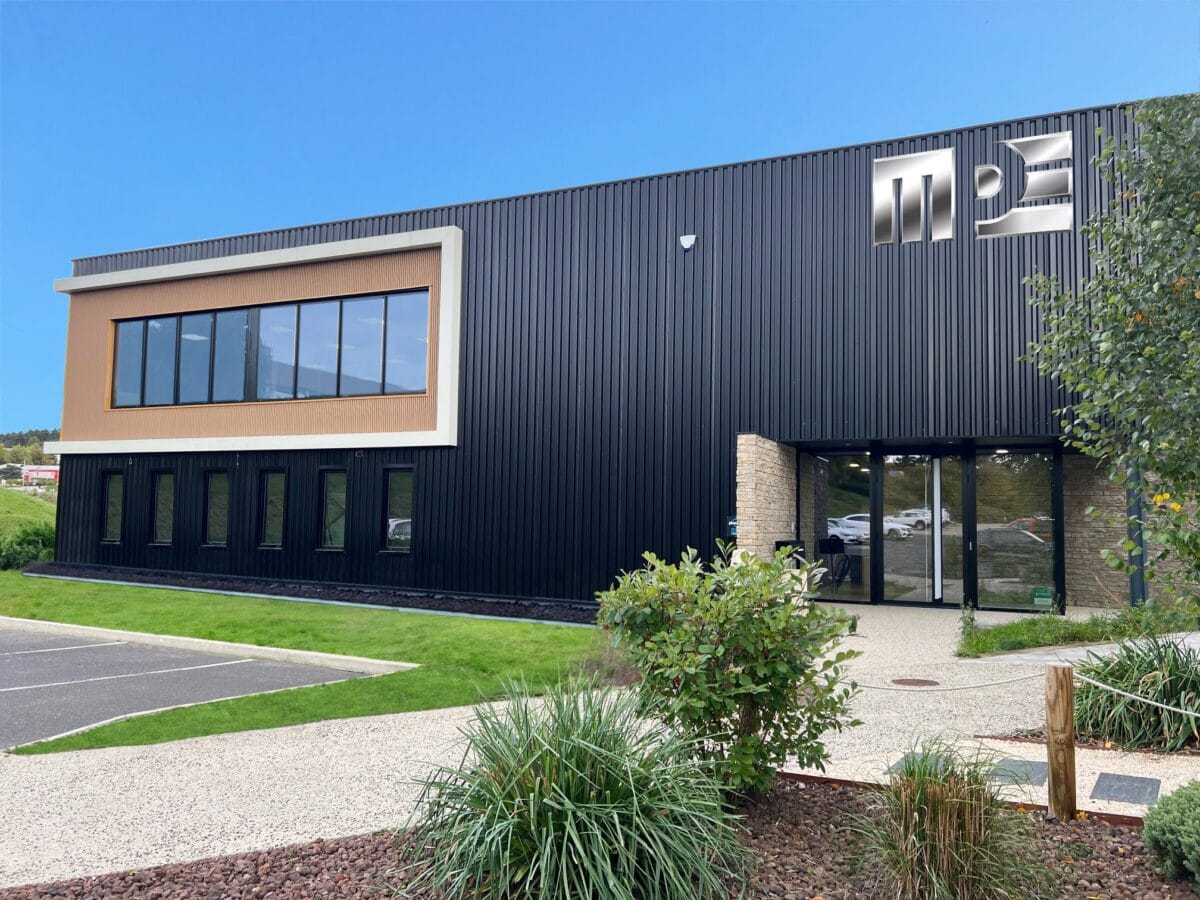As many coffee experts agree, the perfect cup of coffee requires the perfectly grinded batch of beans. Daniel Ephraim, president of Modern Process Equipment Corporation, discusses the new innovations and advances in grinding coffee.
The earliest coffee grinders consisted of stones that were “mashed” together, by hand, to grind the coffee beans. Later, during the Civil War, soldiers actually used their rifle butts to grind coffee for a brew that was often referred to as “strong enough to float a bullet.”
Coffee grinding technologies have continuously developed since that time to meet the continual development of brewing technologies.
In the 20th century, we experienced an evolution from percolator-style to the drip method of brewing. Now, in the 21st century, we are seeing an evolution into pods, capsules and other sophisticated brewing technologies.
To meet these new technological developments and demands, coffee grinding technologies have evolved as well. Some of the new advancements in grinding are outlined here:
Real Time, Intelligent, Touchless Coffee Grinding: This total grinder automation technology includes not only the monitoring and measuring of every aspect of a coffee grind, including density and temperature, but also the adjusting of the grinder to automatically maintain the desired specification.

Ultrafine Grinding: The latest technologies in ultrafine grinding, without using stones, of course, to produce Turkish-type grinds.
Bimodal, or Plurimodal, Grinding: This most recent technology allows for the grinding of two grinds, each with an ideal average particle size, thereby optimizing the specific and individual ele- ments of coffee extraction related to both fine and coarse grinds.
Real Time, Intelligent, Touchless Grinding: The “Intelligent Granulizer” is designed to produce a ground coffee superior to that which is capable through human operation. This is achieved by constantly measuring the ground coffee as it exits the grinder, rather than waiting for the operator to randomly check the grind. Not only does the Intelligent Granulizer measure the grind size and density, but it also immediately reacts, intelligently, to maintain the desired grind size, as necessary.
As the brew time has decreased with the latest brewing methods, from the historical perc/urn-style of eight minutes to today’s pods and capsules at sub-30 seconds, the need for grind accuracy has increased. Visually, this is shown in Figure 1.
Figure 2 – grind comparison illustrates the increasingly greater requirements associated with evolving brewing technologies.
The traditional method by which the grind produced on a grinder is monitored, tested and adjusted is as follows:
Run a quantity of coffee, stop the grinder, check the grind, readjust the grinder, check the grind, and repeat.
Total time to adjust grinder: 10 – 60 minutes – Grind accuracy: 85 – 95%.
Real Time, or Intelligent, grinding is achieved by the coffee being continually checked by a laser analyzer while the grinder is operating and automatically adjusting, as necessary, to accommodate the optimal grind specification.
Total time: Less than one minute – Grind accuracy: 99.5%.
The traditional method by which the coffee density of a grind produced on a grinder is monitored, tested and adjusted is as follows:
Run a quantity of coffee, stop the grinder, check the density, readjust the homogenizer, run the grinder, repeat.
Total time to adjust grinder: 10 – 30 minutes – Grind accuracy: 85 – 95%.
Real Time densification control is achieved by the coffee being continually checked while the grinder is operating and the PLC automatically adjusting, as necessary, to accommodate to the optimal density specification.
Total time: Less than one minute – Grind accuracy: 99.5%.
Other grinding parameters, including product temperature, incoming and discharge water-cooling temperatures, capacities, etc. can be monitored by the Intelligent Granulizer, as well. This is shown in Figure 3.

In summary, the advent of the Intelligent Granulizer allows us to:
·› Gain greater control and consistency of ground coffee particle size and density.
·› Achieve the desired particle size and density quickly, easily and continuously.
·› Monitor and log the particle size and density over time.
Ultrafine Grinding: As background, for centuries, into the 1990’s, Turkish coffee grinding was achieved by using stone-type grinders. With the development of the modern, Turkish Granulizer, vast improvements in product quality and consistency have been achieved.
Figure 4 illustrates the expected grind production from a traditional stone/plate grinder versus a modern grinder. With the Model FT grinder, the particle (grind) required for an ideal Turkish product is optimized by producing a more uniform grind.

Figure 5 shows the temperature build-up with a stone/plate-style Turkish grinder compared to a modern FT grinder. The modern water- cooled grinder eliminates the temperature increase factor from the coffee grinding process.
Grind distributions have gone from an average particle size of 125 microns to 100 microns to 70 microns to, now, 50 microns. We expect that by next year, we will be achieving particle sizes as low as 35 microns (about the size of a coffee cell!).

“Rounding out the Turkish”: Since one feature of the stone grinder is the attrition-type of grinding that it uses (in other words, the coffee is continually “worked” in order to achieve the coffee grind) there is a certain “roundness” to its texture, which becomes a desirable attribute when the Turkish coffee drink is consumed. To duplicate this attribute, the sharp particle typically produced on a modern grinder (Figure 6) is rounded through the post- grinding “rounding process” (Figure 7). With this new “rounding process” technology that is integrated into the Turkish Granulizer, the coffee has the same shape, texture and “feel” on the tongue as the stone-ground variety.
Bimodal, or Plurimodal, Grinding: Sometimes, it’s advantageous to produce a plurimodal particle size distribution, or grind, where the finer particles enhance the exposed extraction surface (chemical need) and the coarser particles allow for the water flow (physical need). One example of this is in espresso coffee, where a concentration of 20 micron-type particles is essential to producing the ideal cup of espresso.
This same desire may be present for a variety of coffee applications, including cartridge-type, pod-type and any other brewing method that needs to balance the finer particles, which increase the exposed extraction surface, and the coarser particles, which permit the water flow.
Figure 8 shows the particle distribution that might be desirable for such an application, since it would consist of not only a relatively defined particle distribution, but also a preponderance of smaller particles to enhance the coffee distribution process.

Figure 9 shows the bimodal method of the EFT Granulizer, which produces a defined amount of the finer particles at the same time as the preponderance of the primary modal grind. This allows the physical characteristics to endure while the chemical characteristics of the smaller particles are introduced.
A natural blending of these two modes, instantaneously within the grinder, is shown in Figure 10. This blending achieves the desired plurimodal particle size distribution desired for the aforementioned applications, such as espresso, pods, cartridge delivery systems, etc.



